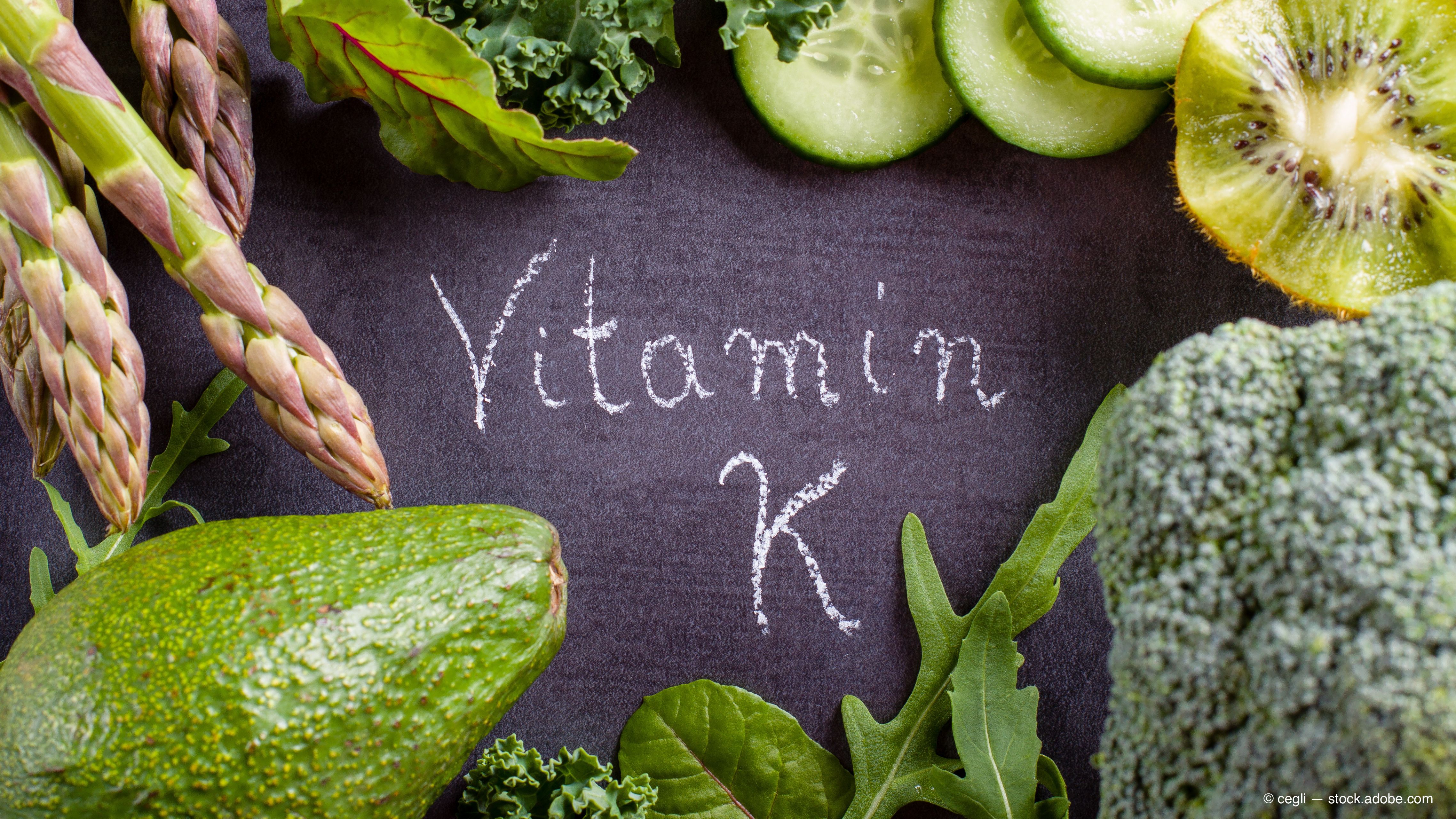Consider the underrated significance of vitamin K2 in eye care


There are four fat-soluble vitamins-A, D, E and K-each with various subtypes. Unlike water soluble vitamins, these are stored in the body. However, the subtypes of vitamin K have not garnered as much attention as its three siblings.
A recent meta-analysis demonstrated that vitamin K2 lowers the rate of bone fractures by 22 percent.1 Previously by Dr. Richer: Consider the whole patient when treating glaucoma
This is accomplished by facilitating the production of the bone hormone osteocalcin that results in the deposition of calcium in bone-the opposite approach to bone-hardening pharmaceuticals.
At the same time, vitamin K2 is extremely important to eyecare professionals because it has the exact opposite effect in blood vessels; it prevents excess vascular calcification that results in age-related stiffness and atherosclerotic plaque of blood vessels found in the heart, kidneys, and retinal blood vessels.
Caution with warfarin
Most ODs are already aware of the vitamin K subtype K1 (phylloquinone) found in green leafy vegetable produce-sometimes problematic to age-related macular degeneration (AMD) and cataract patients.
And they are mindful that the potent anticoagulant warfarin (coumadin, Bristol-Myers Squibb) and other related drugs act by blocking vitamin-K dependent pathways, thus decreasing the body’s ability to produce several crucial blood clotting factors.
Warfarin has been a lifesaver for cardiac patients with atrial fibrillation (AFib) and valvular heart disease, as well as genetically (Factor V Leiden) and occupationally (sedentary) susceptible patients at risk for deep vein thrombosis (DVT) and/ or pulmonary embolism.
Patients taking warfarin or a related medication should consult their prescribing physician before taking any type of vitamin K supplement.
Related: Why AMD supplmentation should not be casual
Patients seeking the myriad ocular and health benefits of spinach, collards, and other leafy greens (rich in folate, magnesium, and lutein, and containing vitamin K1) should consult their prescribing physicians before including such vegetables in their diets.
This because the so-called “coumadin level” or dose can often be judiciously adjusted for AMD patients. This is also the subgroup of eyecare patients for whom ocular supplements reign supreme.
Fortunately, spinach intake or vitamin K supplements do not interact with the newer and novel oral anticoagulants such as Pradaxa (dabigatran etexilate, Boehringer Ingelheim Pharmaceuticals, Inc.), Xarelto (rivaroxaban, Janssen Pharmaceuticals, Inc), and Eliquis (apixaban, Bristol-Myers Squibb/Pfizer) that inhibit venous clotting through a Factor Xa (thrombin) “vitamin K-independent” mechanism.
Related: Supplements are beneficial in tackling vision loss
Vitamin K2 at forefront of medicine, healthy guts
Vitamin K2 (menaquinone) is found in Asian natto (fermented soy), pastured and grazed animal products (eggs, meat, butter, and milk) as well as aged fermented cheeses. It is also naturally produced by gut bacteria constituting a “healthy microbiome.”
Unhealthy guts result from excessive intake of sugar or artificial sweeteners, simple carbohydrates, gluten intolerance, and some genetically modified foods and oral antibiotics.
Vitamin K2 has several subtypes denoted by numbers such as MK-4, MK-6, MK-7 and MK-9, all varying in molecular structure. MK-7-the long acting form of vitamin K2-has garnered the most attention.2
So much of an OD’s time is spent managing ocular micro-vascular diseases such as glaucoma and AMD. Yet vitamin K2 found in microgram concentrations in the diet has a profound effect as a calcium manager.
Related: ODs must teach patients about proper nutrition
For instance, the risk of coronary artery disease was reduced by 9 percent for every 10 mcg of daily dietary vitamin K2 in individuals age 49 to 70 years.3
In a 10-year Rotterdam study of 4,807 adults age 55 and older, the rate of newly diagnosed cardiovascular disease was 41 percent lower in those with the highest vitamin K2 intake, and cardiovascular-associated death was 57 percent lower. In fact, death from “any cause” was 26 percent lower.4
Vitamin K2 is the fat-soluble nutrient subclass that can no longer be ignored by the eyecare community.
Read more articles by Dr. Richer
Disclosures:
1.Hao G, Zhang B, Gu M, Chen C, Zhang Q, Zhang G, Cao X. Vitamin K intake and the risk of fractures: A meta-analysis. Medicine (Baltimore). 2017 Apr;96(17):e6725.
2. Wen L, Chen J, Duan L, Li S. Vitamin K-dependent proteins involved in bone and cardiovascular health (Review). Mol MedRep. 2018 Jul;18(1):3–15.
3. Gast GC, de Roos NM, Sluijs I, Bots ML, Beulens JW, Witteman JC, Grobbee DE, Peeters PH, van der Schouw YT. A high menaquinone intake reduces the incidence of coronary heart disease. Nutr Metab Cardiovasc Dis. 2009 Sep;19(7):504-10.
4. Geleijnse JM, Vermeer C, Grobbee DE, Schurgers LJ, Knapen MH, van der Meer IM, Hofman A, Witteman JC. Dietary intake of menaquinone is associated with a reduced risk of coronary artery disease: the Rotterdam Study. J Nutr. 2004 Nov;134(11):3100-5.

Newsletter
Want more insights like this? Subscribe to Optometry Times and get clinical pearls and practice tips delivered straight to your inbox.